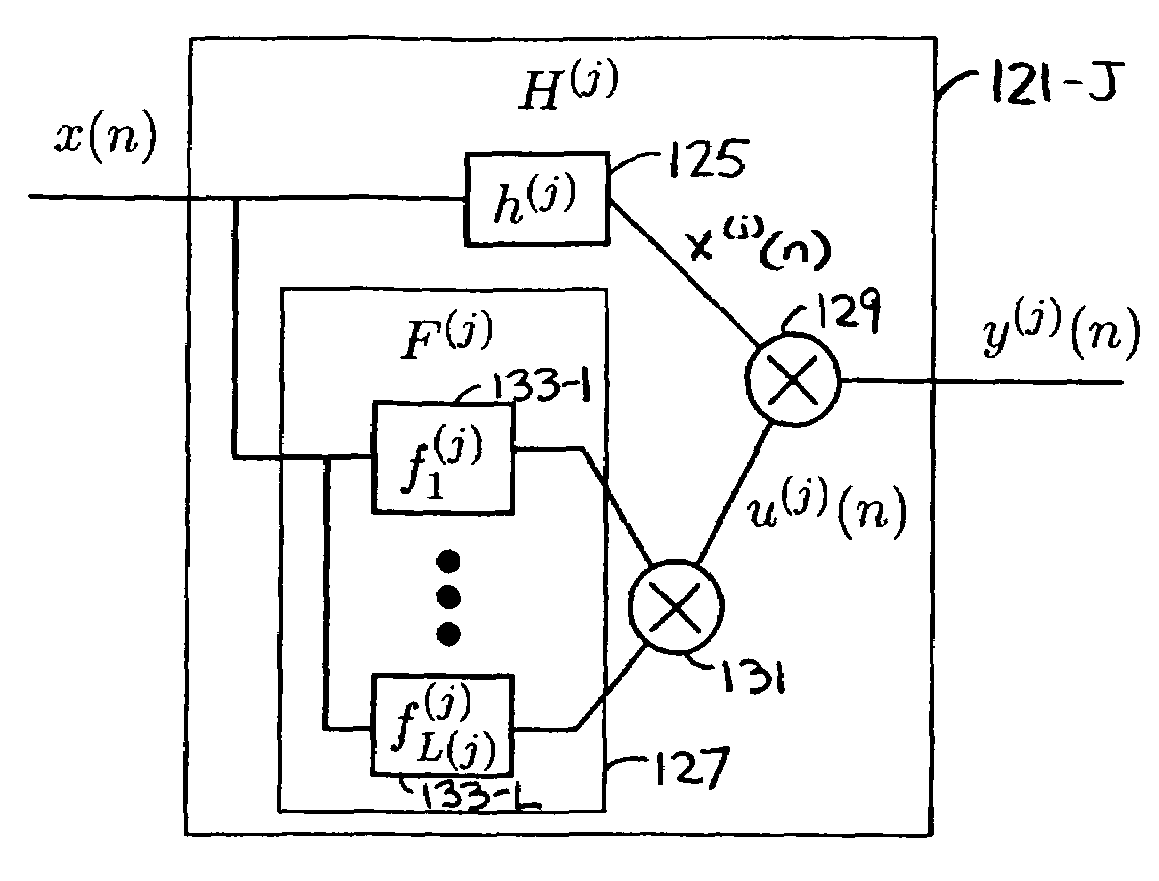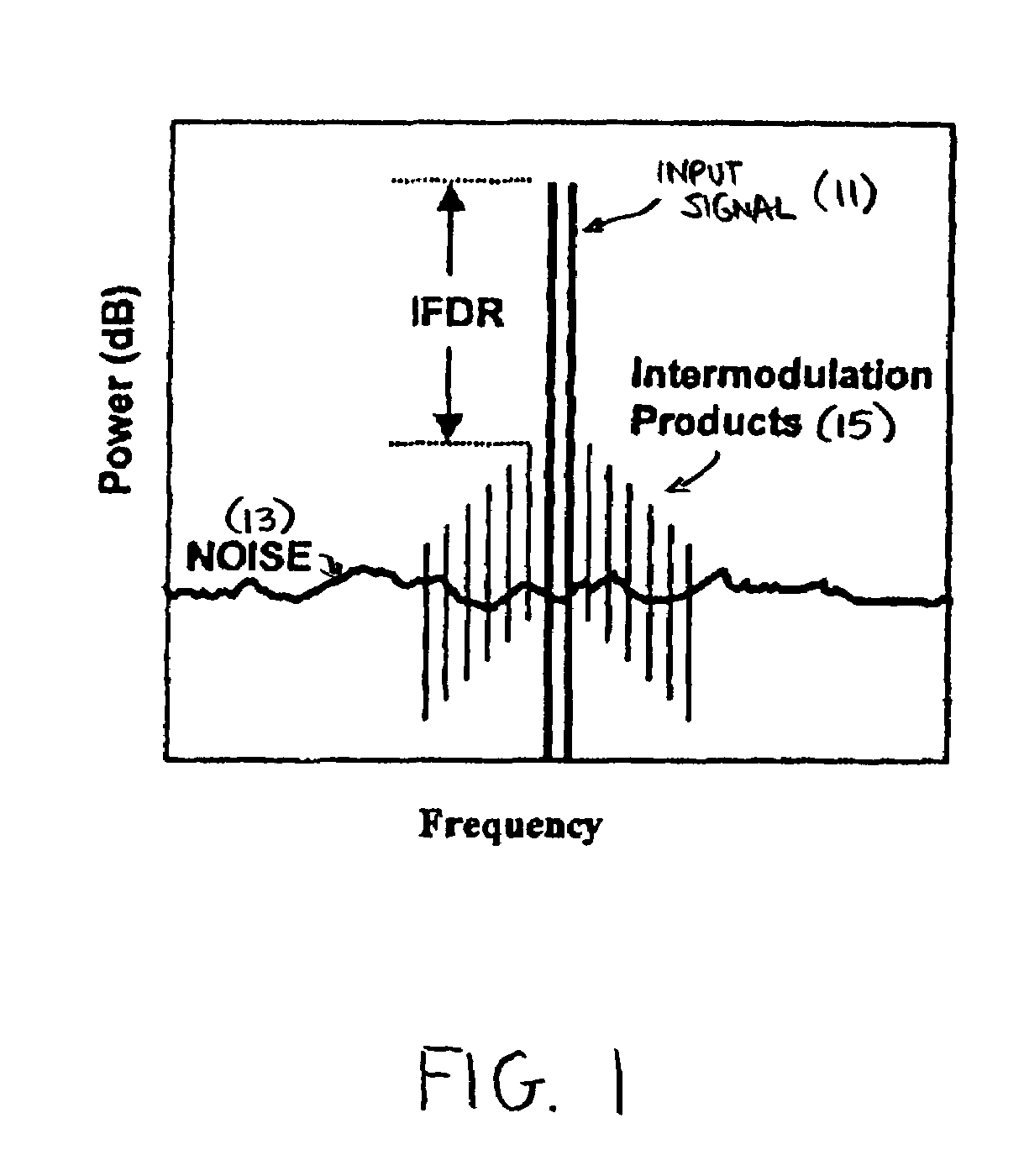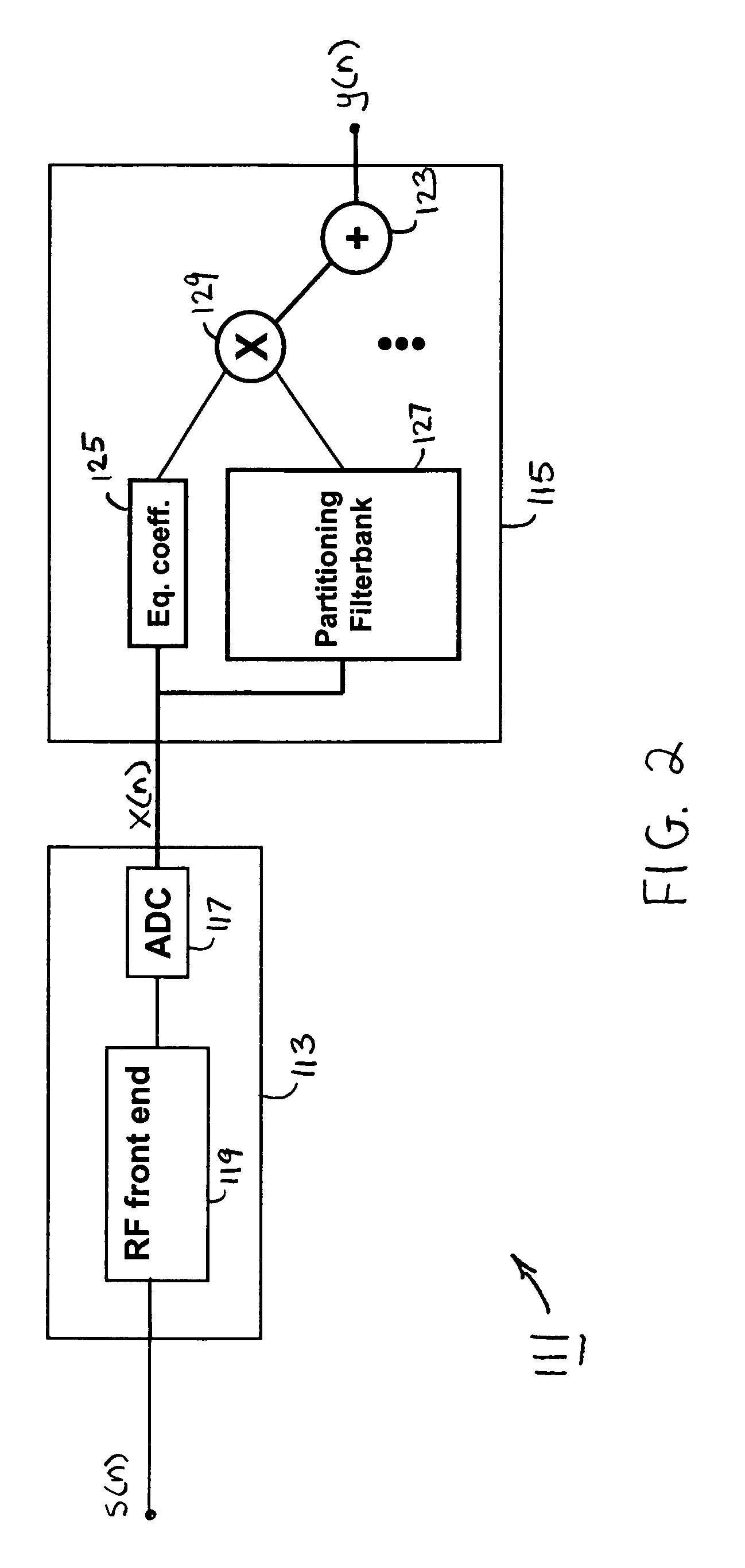Method and system of nonlinear signal processing
a nonlinear signal and processing method technology, applied in the field of nonlinear systems, can solve the problems of affecting the overall performance of the system, the ability of signal processors, and the substantial nonlinear distortion of the product, so as to reduce the nonlinearity of the distorted digital signal
- Summary
- Abstract
- Description
- Claims
- Application Information
AI Technical Summary
Benefits of technology
Problems solved by technology
Method used
Image
Examples
Embodiment Construction
[0043]Referring now to FIG. 2, there is shown a signal processing system constructed according to the teachings of the present invention and identified generally by reference numeral 111. As can been seen, system 111 includes a nonlinear subsystem 113 and a nonlinear equalizer (NLEQ) 115. As will be described in detail below, NLEQ 115 is designed to minimize nonlinear signal distortions produced by subsystem 113 and, in this capacity, serves as the principal novel feature of the present invention. The description that follows below will detail the architecture of NLEQ 115, methods for identifying the optimal substructure for NLEQ 115 (including linear filter coefficients), and novel parsimonious methods for exciting the various nonlinear modalities of subsystem 113 for purposes of identification.
[0044]As defined herein, nonlinear subsystem 113 represents any system that exhibits nonlinear behavior (e.g., biological systems, fluid flow systems, optical systems, imaging systems, RF re...
PUM
 Login to View More
Login to View More Abstract
Description
Claims
Application Information
 Login to View More
Login to View More - R&D
- Intellectual Property
- Life Sciences
- Materials
- Tech Scout
- Unparalleled Data Quality
- Higher Quality Content
- 60% Fewer Hallucinations
Browse by: Latest US Patents, China's latest patents, Technical Efficacy Thesaurus, Application Domain, Technology Topic, Popular Technical Reports.
© 2025 PatSnap. All rights reserved.Legal|Privacy policy|Modern Slavery Act Transparency Statement|Sitemap|About US| Contact US: help@patsnap.com



